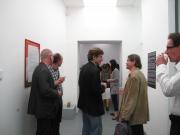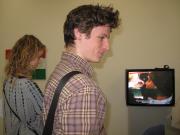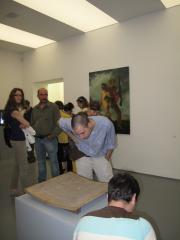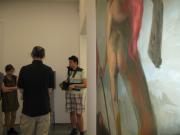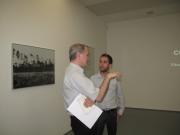By any means necessary
2013.04.25 - 06.14.

By Any Means Necessary
group exhibition at acb Gallery
The exhibition explores radical artistic expressions in contemporary art. It features artworks from the past decade and the recent past, which react to a social or political situation or phenomenon, but, offering more than mere critique, they also urge us to take a stand for or against the given issue. These artistic statements, in most cases, do not tread lightly; stretching the limits of conventional tastes and consensual norms, they shock and provoke their audience into assuming a standpoint. Their activism directly or indirectly relates to art and explores the social role of art and the artist, thus touching on the periodically resurfacing problematic of the autonomy of art.
The artists participating in the exhibition focus their creative practice on their relationship to power, be it political and/or economic power, majority opinion, or prejudice. In accordance with this, the displayed artworks also include some that express an opposition to oppressive dictatorial rule, some that take a stand against current political tendencies, and some that raise their voice against attitudes of oppression and exclusion prevalent in mainstream society.
The majority of the radically toned artworks displayed at the exhibition simultaneously draw on the millennia-long traditions of political and religious propaganda and the daily expanding arsenal of marketing strategies within consumer culture. A number of featured works carry a personal quality that points past any personal sense of relating that can be prompted by their manifest-like presentation. In a few cases, the exhibiting artists openly cross the boundaries of the ethical norms – be they spoken or unspoken – of artistic expression.
The title By Any Means Necessary comes from a work of the same title by South-African artist Kendell Geers, which will also be featured at the exhibition, and which was displayed in its original, English language version at the Guggenheim Museum in 1995.
The exhibition, in addition to offering radical artistic positions, also explores the role of the contemporary commercial gallery as an institution: aside from allowing room for free artistic expression, to what extent can a commercial gallery assume a social role? Can the exhibition of a commercial gallery serve as an authentic platform for taking a stand for or against a particular issue? Can a commercial gallery be radical?
We would like to thank the following persons and institutions for their help in the realization of the exhibition:
Artpool Art Research Center, Christie Digital Systems, Irokéz Collection, Glowing Bulbs, Borbála Major, King St. Stephen Museum, Annamária Szőke, tranzit.hu, Vintage Gallery
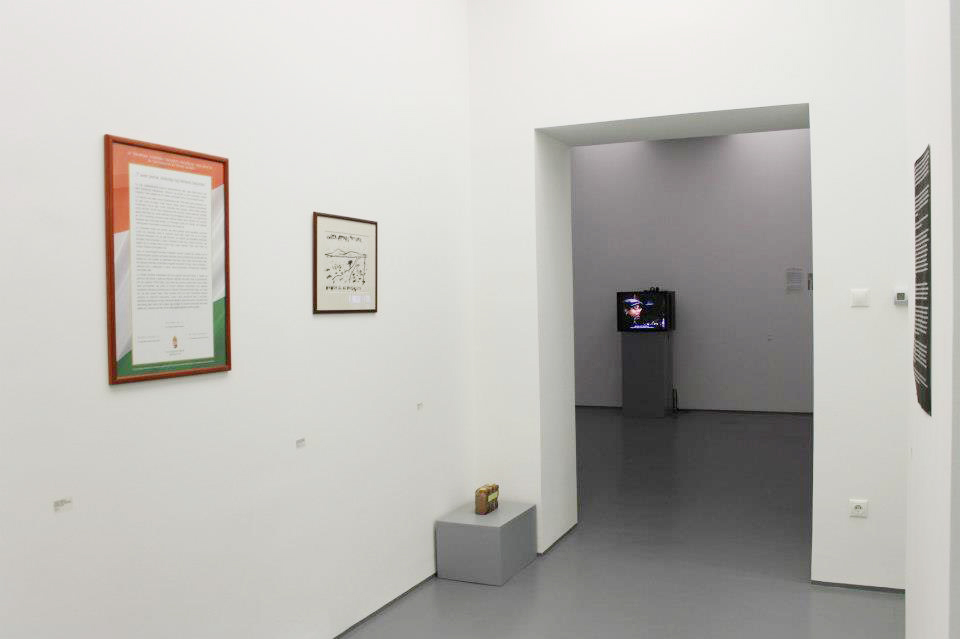
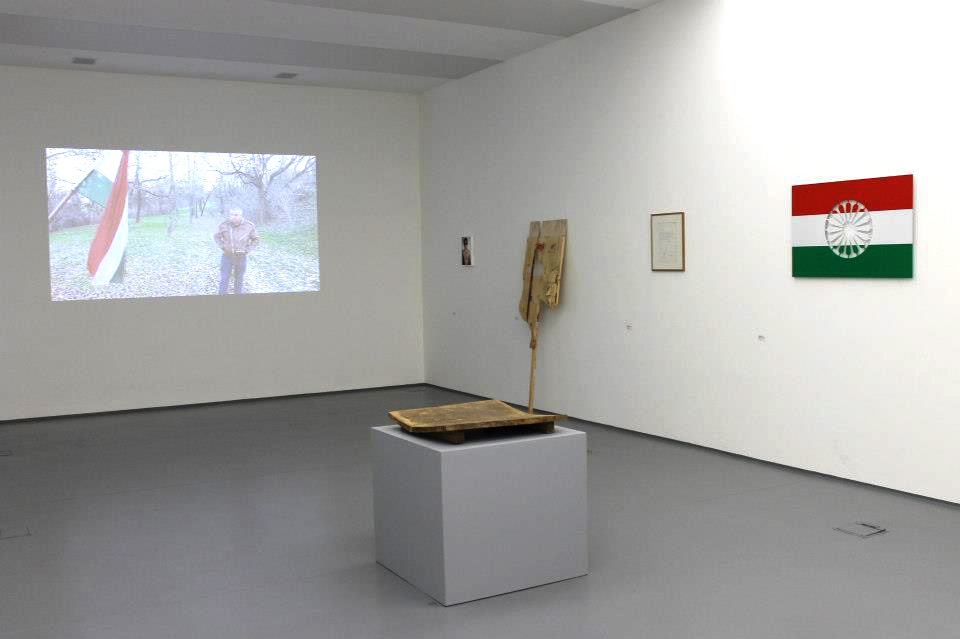
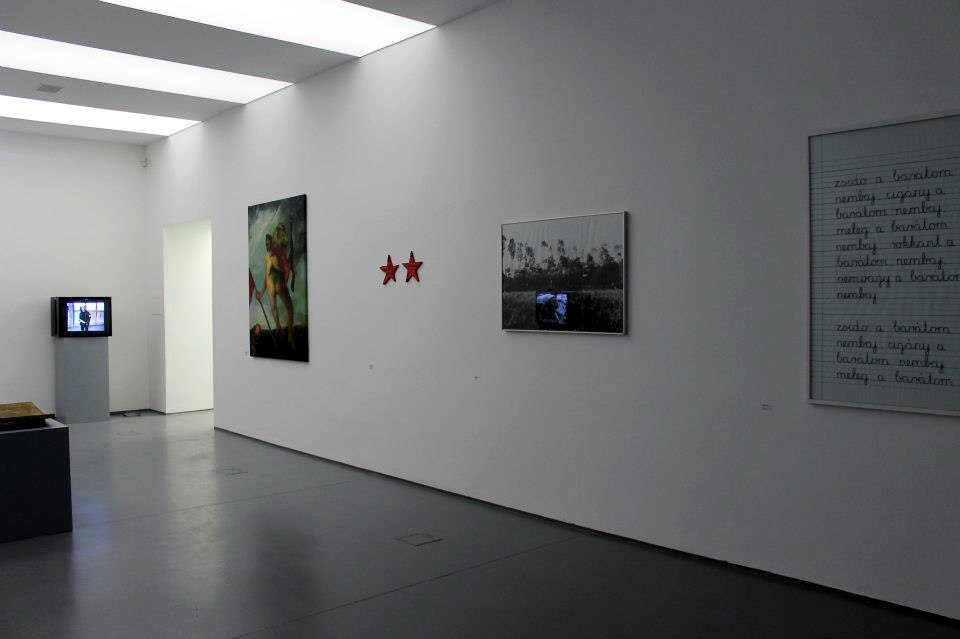
********************************************************************************************************************************************************
Péter Szalay: Residual Value
In the first exhibition held at acb attachment, Péter Szalay explores – and combines through recycling – tried and tested forms of preserving and presenting mementos and material remains.
The representational techniques of institutions established with the aim of sustaining shared cultural memory and caring for its material remains, in turn, shape that memory. Péter Szalay, drawing on the techniques of presentation employed by museums of archaeology and ethnography, displays a fictitious set of architectural and material remains – construction debris left behind by the remodelling of acb Gallery – in an exhibition context.
The building rubble created by torn down walls – building materials, architectural elements, discarded objects and their components – is exhibited as if it constituted a collection of related objects that surfaced during an archaeological excavation. Szalay arranges, groups and processes these elements, as a result of which these fictitious relics are placed on the walls, in the space, an in display cases, giving the impression of systematized orderliness and directed remembrance.
This artistic gesture brings with it a number of consequences that are worth thinking over. One of these is the relationship between contemporary art and historicality, which is, as per the temporal dimension, by necessity relative. In the present case, the artist, purely through the means of representation, declares something a historical relic, when it isn’t necessarily that. Another important issue raised by the exhibition relates to the concept of the artwork. The material elements that serve as the substance of the exhibition originate from the space of an institution that engages in the presentation and selling of works of art. Through being “reused” and featured in an exhibition, these elements gain new status; they become works of art, which can be viewed, interpreted and sold. It is this change in status that the title of the exhibition refers to in an ironic fashion: “residual value”, which is also used in accounting (among other areas), stands for the estimated market value of an asset at the end of its useful lifespan. In connection to the exhibition, however, the words that compose this term also bear reference individually.
Although Péter Szalay has earned his degree in sculpture, he works with such varied media as object, installation, lightbox, performance, and video. His works are often operable machines made of simple materials and found objects, or their components. In his art, he successfully combines DIY aesthetics known from Eastern European conceptual and neo-conceptual art with the latest advances in technology.
In Szalay’s essentially intellectual works, there is always emphasis on the meaning-making function of material realization (operation, use of materials), which constitutes an important dimension of interpretation. The thematic of his works is extraordinarily multifaceted, ranging from marvelling at the metaphysical essence of simple physical phenomena to reflecting on the social, cultural and artistic phenomena of the present. His critical attitude is revealed by the ironic tone that often appears in his works, sometimes in the form of language games, at other times as visual games or gags.
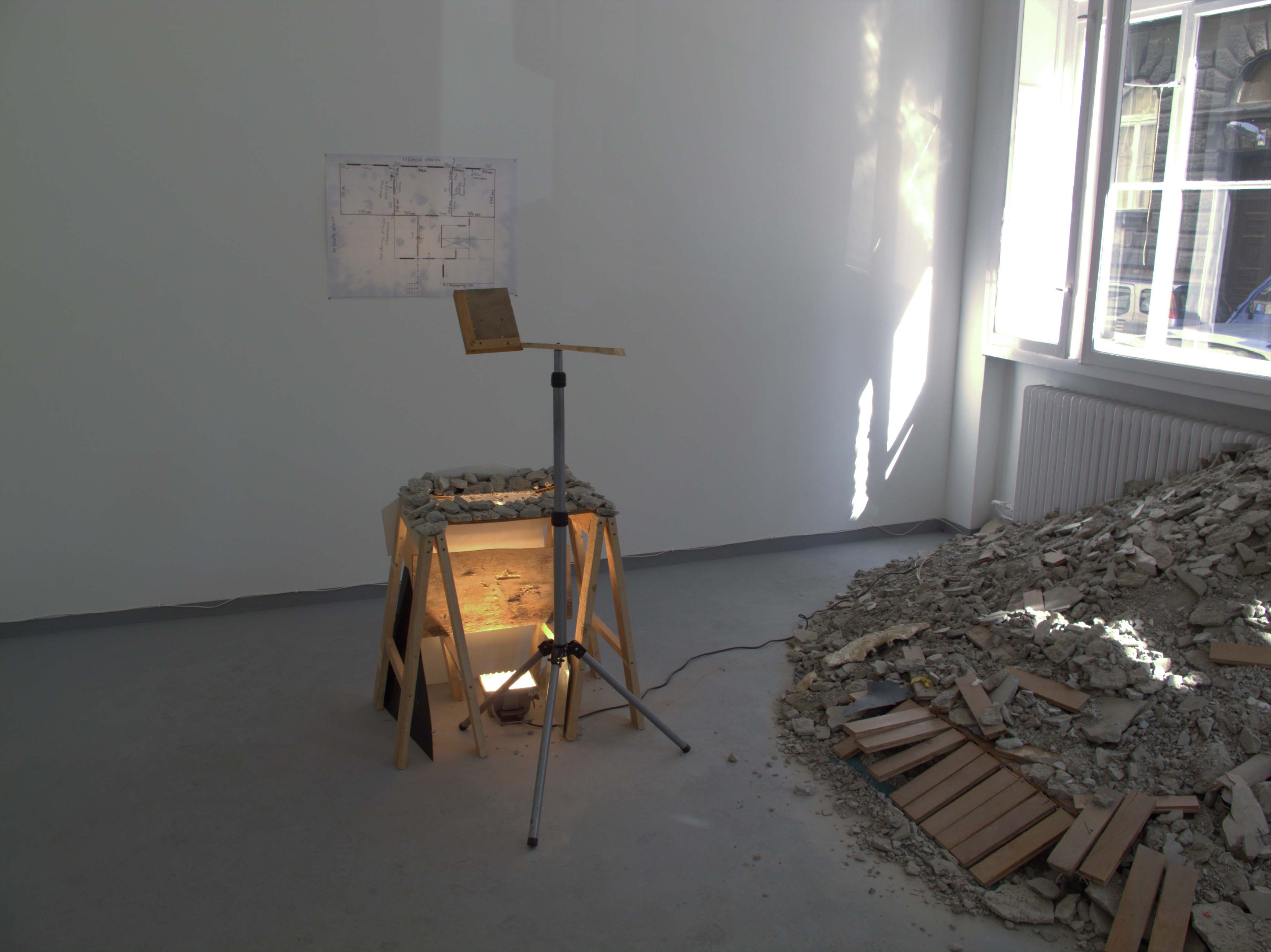
Jankó Judit: Az új acb: meddig mehet el egy kereskedelmi galéria? http://artportal.hu/magazin/kortars/az-uj-acb-meddig-mehet-el-egy-kereskedelmi-galeria
Kürti Emese: A kispályás korszak vége, in: Magyar Narancs, 2013.05.09.
Dékei Kriszta: Az aknamezők lovagjai http://revizoronline.com/hu/cikk/4502/minden-szukseges-eszkozzel-acb-galeria/
Budapest (1): Par tous les moyens nécessaires http://imago.blog.lemonde.fr/2013/05/22/budapest-1-par-tous-les-moyens-necessaires/
Kelen Károly: Radikális művészek, in: Népszabadság, 2013.05.10. http://nol.hu/kult/20130510-radikalis_muveszek


